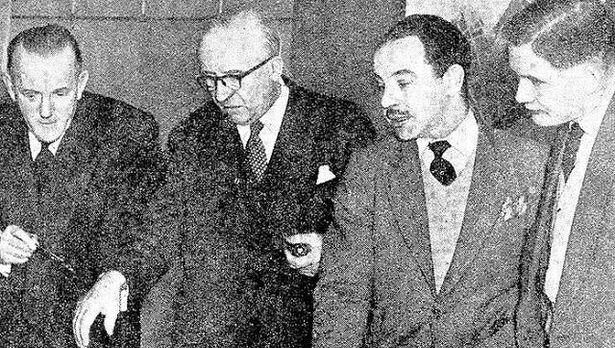Alan Clawley on one of Birmingham’s most influential men of the past.
Planning is said to be a rational process but under the surface it is driven by people with strong egos, financial interests or political ambitions. Their projects are framed in over-simplistic language that makes them easy to present to committee members, shareholders or property developers who have little time to go into detail or probe their evidential basis.
There can be no better way of finding out what went on behind the scenes in twentieth century Birmingham than by reading the autobiography of Sir Frank Price.
Born in a Hockley slum in 1922 Price was elected a Labour councillor for St Pauls Ward in 1949, became chairman of the powerful Public Works Committee, Lord Mayor in 1964, Leader of the Council and an Alderman in 1958. From 1959 he worked for about ten years for Murrayfield, a property development company which bought and sold properties in northern towns and cities that were “ripe for redevelopment”. His serial career in public service involved being Chairman of Telford New Town and Chairman of the British Waterways Board.
Price rarely stayed around long enough to face the consequences of his actions in part because the projects in which he was interested, such as the Inner Ring Road, took many years to implement. In his book Price recalls numerous meetings with government ministers and civil servants in London. He is proud of the tactics he used to get his way. His adversaries, even those in his own party often accused him of threatening behaviour (he had been a boxer in his youth). He would state his case and walk out of a meeting to show how serious he was about it. Understandably he had many enemies and was widely known as a difficult person to deal with.
His main allies were the City Engineer Herbert Manzoni (1899-1972) and the architect Seymour Harris. One of his colleagues was former Second World War general, Field Marshal Sir Claude John Eyre Auchinleck (The Auk), who was Chairman of Murrayfield when Price worked for that company. The office block at Five Ways designed by Seymour Harris in 1961-2 was named Auchinleck House and a rather stiff statue of the Auk stood in the middle of the plaza until 2015 when it was moved to the pavement on Broad Street in front of what is now the Park Regis Hotel.
Price’s main interest was the Inner Ring Road and the Smallbrook section of it which was the first to be completed. His idea was that selling off the Council-owned shop frontages would make a healthy profit for the Council.
Price never once mentions John Madin in his book even when referring to the Plan for redeveloping the Calthorpe estate. As a Labour Ccuncillor from a poor background it would have been understandable – although he refrains from saying it – that he might begrudge the middle classes of Edgbaston their sylvan acres when the slums from which he had escaped were still waiting to be torn down and thousands languished on the council’s housing waiting list. So, in return for allowing Lord Calthorpe to adopt John Madin’s plan for the estate, Price persuaded Lord Calthorpe to allocate land on his estate between Pershore Road and Bristol Road for council housing.
